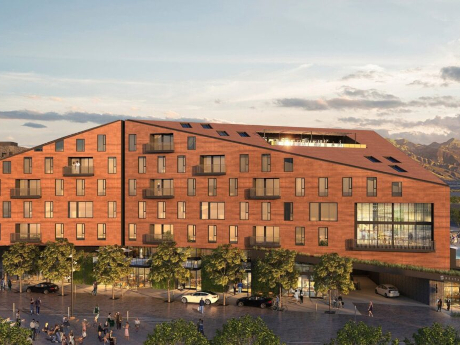— By Kip Paul, vice chair; Michael King, director; and JT Redd, senior associate, Cushman & Wakefield —
The Salt Lake City multifamily market has experienced significant growth in recent years. This reflects the influx of new residents to the State of Utah, in addition to notable increases in average household income. Developers have responded to this growing demand by delivering an unprecedented amount of rental housing inventory to the market. Since 2020, new deliveries averaged 12 percent of Salt Lake’s inventory base each year.
Despite increases in apartment supply, overall fundamentals remain strong. Last year’s vacancy rates remained below 4 percent for the 12th consecutive year, while rental rates surged from $1,182 to $1,654 between 2020 and 2023. Salt Lake City’s renowned access to the outdoors and high quality of life place the city in a league of its own, positioning it to continue to capture apartment demand for years to come.
What Sets Salt Lake Apart
The Salt Lake City multifamily market stands out due to several key features. First, it offers affordability. Rental rates remain below 30 percent of residents’ average income despite overall increases in apartment prices. Second, Salt Lake City provides unparalleled access to outdoor recreation without compromising on urban amenities. Residents can enjoy hiking, camping and skiing just a short drive away, all while maintaining access to city conveniences like restaurants, bars, public transit and an accessible international airport.
Ongoing development projects like LHM’s North Temple development, as well as the potential arrival of an MLB team in Salt Lake City, also signal a promising future for the multifamily market. With sustained development and the city’s advantageous position, the anticipated influx of new residents is poised to enhance its attractiveness and long-term viability.
Class A Test
The surge in Salt Lake’s multifamily market has set a new benchmark with the emergence of true Class A apartments, distinguishing them from all other options. Noteworthy projects like Liberty SKY (Salt Lake’s first multifamily high rise), the Charles and Hardware Village have demonstrated a strong demand for Class A apartments by maintaining stability despite an increase in overall apartment supply. Recent Class A deliveries like Bridge Investment Group’s Post District have experienced remarkable leasing velocity, showcasing the sustained demand for Class A dwellings. The depth of the Class A market will continue to be tested as new developments like Astra, Utah’s tallest tower, and Worthington come online. Considering the 100 percent success rate of the previously mentioned Class A projects, there’s optimism that these new endeavors will easily attract tenants.
Going Forward — 2024 And Beyond
There may be a slight uptick in the vacancy rate and a decrease in rentals over the next two years with record-breaking deliveries in Salt Lake, particularly in downtown. However, certain types and classes of multifamily properties are positioned to withstand this challenge better than others. These include townhomes, garden-style apartments, Class A projects and those with larger unit sizes. Despite short-term fluctuations, the multifamily market is expected to maintain resilience in the long run. Factors like construction pauses and sustained immigration — driven by the city’s strong fundamentals and diverse economy — as well as quality of life will contribute to its enduring stability.


